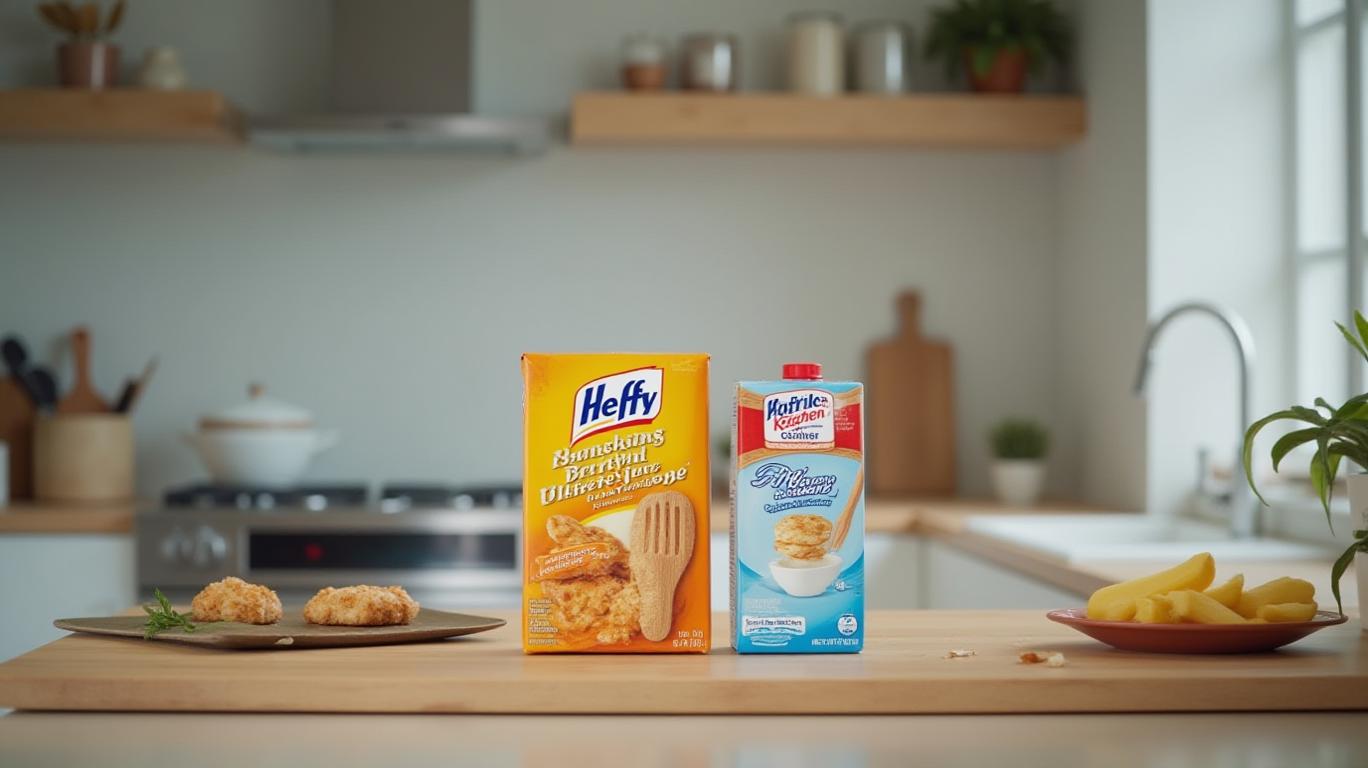Navigating Near-Term Headwinds to Unlock Long-Term Value: Reynolds Consumer Products (REYN)
Investors often face a critical question when analyzing companies under pressure: Is the pain temporary, or does it signal a deeper malaise?
Products (REYN) finds itself at this crossroads, having slashed EBITDA guidance by over 45% since mid-2024. Yet beneath the headlines of tariffs, retailer destocking, and sluggish demand lies a story of resilience—and a compelling case for long-term investors. Let’s dissect whether REYN’s strategic moves position it to outperform once macro challenges subside.The Near-Term Storm: Tariffs, Destocking, and Demand Volatility
REYN’s recent struggles are no secret. In early 2025, the company cited $100–$200 million in annualized tariff-related cost headwinds—primarily from aluminum, a critical material for its foil products—as a key driver of margin pressure. Simultaneously, retailers have permanently adjusted inventory practices, leading to 4% year-on-year volume declines in Q1 2025. Compounding these issues, shifting consumer preferences and a later Easter disrupted sales patterns, pushing Q2 revenue guidance to a 2%–5% decline compared to 2024.
The result? A $660 million full-year 2025 EBITDA estimate, down sharply from its original 2024 target. For now, the storm shows no signs of abating: Q2 EBITDA is projected to fall to $155–$165 million, a 10% drop from 2024 levels.
The Silver Lining: Pricing Power and Innovation as Offset Strategies
But REYN isn’t passively enduring these headwinds. Management has deployed three critical levers to neutralize risks and position the company for recovery:
1. Aggressive Price Increases to Offset Tariffs
REYN’s $2–$4 of positive pricing for 2025 directly targets tariff-driven cost inflation. While these hikes take 2–6 months to flow through (a lag reflected in Q2’s weak outlook), they’re a structural hedge against ongoing aluminum price volatility. CFO Nathan Lowe emphasized that these measures are “designed to neutralize tariff impacts over time,” ensuring that margins stabilize once pricing momentum builds.
2. Innovation-Driven Share Gains in Core Categories
While overall volumes have dipped, REYN has outperformed its categories by 2 points in key segments like household foil and waste bags. This is no accident: strategic launches like Hefty Compostable Cutlery (leveraging tech from its Atacama acquisition) and Reynolds Kitchen Air Fryer Cups are capturing premium demand. These products aren’t just incremental—they’re redefining category standards, allowing REYN to command pricing power even in soft markets.

3. Automation and Supply Chain Efficiency: A Margin Lifeline
REYN’s investments in manufacturing automation and supply chain optimization are set to bear fruit in 2025. Projects like network realignment and procurement cost reductions are expected to deliver “substantial margin benefits later in the year”, offsetting operational inefficiencies. With a $20–$40 million increase in capital spending targeted at high-return automation, management is doubling down on long-term profitability.
Balance Sheet Flexibility: A Cushion for Rough Seas
REYN’s financial health is a critical underpinning for its turnaround thesis. The company has refinanced $1.645 billion of debt, extending maturities to 2032 and lowering net debt to $1.579 billion—a 2.3x net debt/EBITDA ratio well within its target range. This restructuring, combined with a $700 million undrawn revolving credit facility, ensures liquidity to weather the storm.
Moreover, REYN has maintained its $0.23 quarterly dividend, signaling confidence in cash flow stability. GuruFocus’s valuation of $27.50 per share (vs. $23 today) suggests the market may already be pricing in an undervaluation.
Why Now Is the Time to Buy
The near-term pain is real, but three catalysts suggest this is a buying opportunity:
- Price Realization: Once 2025’s hikes fully embed, tariff pressures will ebb, unlocking margin expansion.
- Volume Stabilization: Retailer destocking is permanent, but REYN’s share gains and innovation pipeline mean market share can grow even in a smaller overall category.
- Automation Payoffs: Margins should rebound as efficiency gains materialize, particularly in the second half of 2025.
Conclusion: A Storm Worth Weathering
REYN’s lowered EBITDA guidance isn’t a death knell—it’s a temporary setback in a company with pricing power, innovation-driven growth, and a de-risked balance sheet. While 2025’s macro challenges are formidable, they’re being met with strategic precision. For investors willing to look beyond the next quarter, REYN’s mix of defensive resilience and offensive innovation makes it a compelling play for when the winds finally turn in its favor.
The question isn’t whether REYN can survive—it’s whether you want to be positioned when it thrives.
DISCLAIMER: This article is for informational purposes only and should not be construed as financial advice. Always conduct your own research before making investment decisions.

Comments
No comments yet